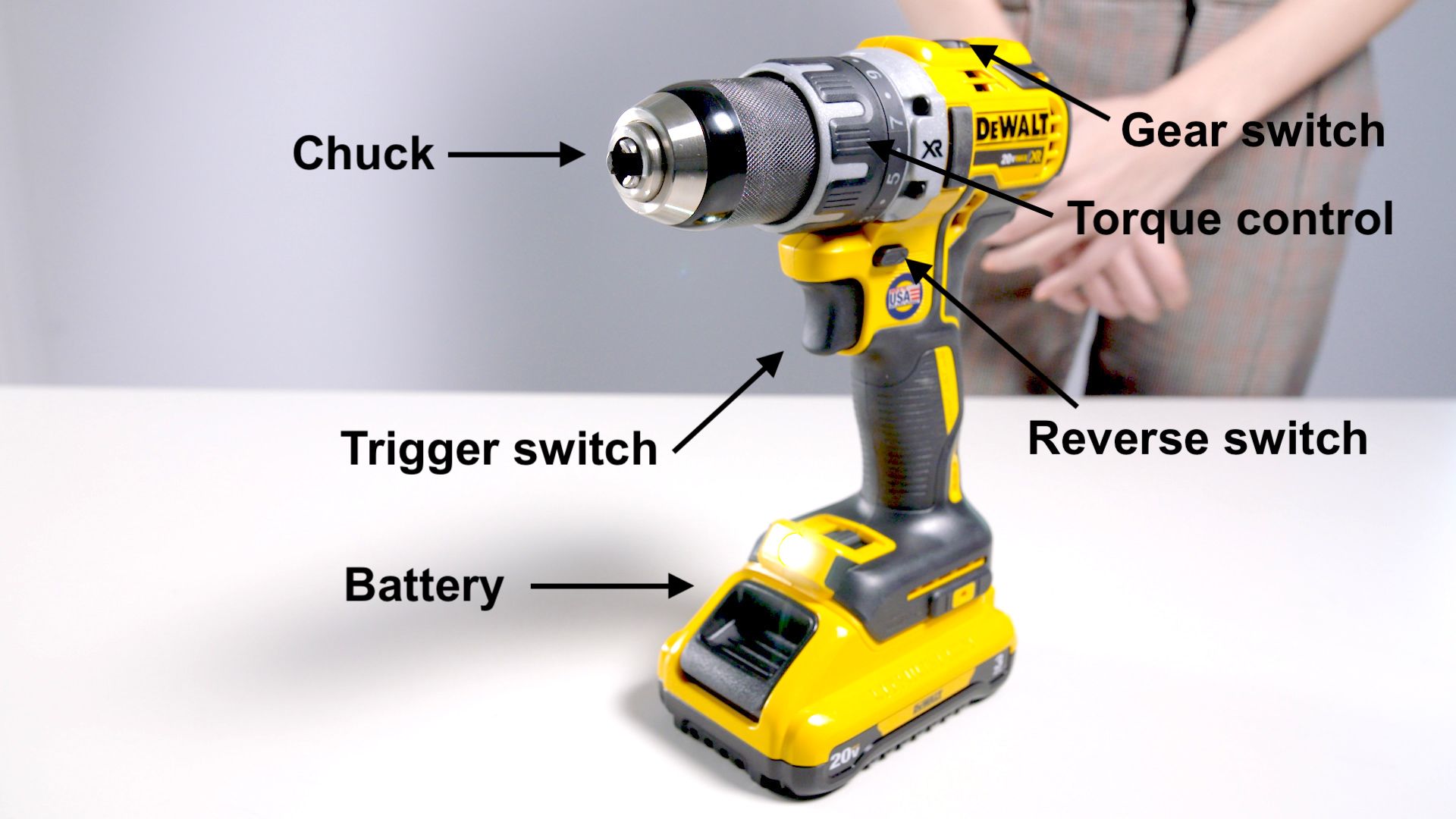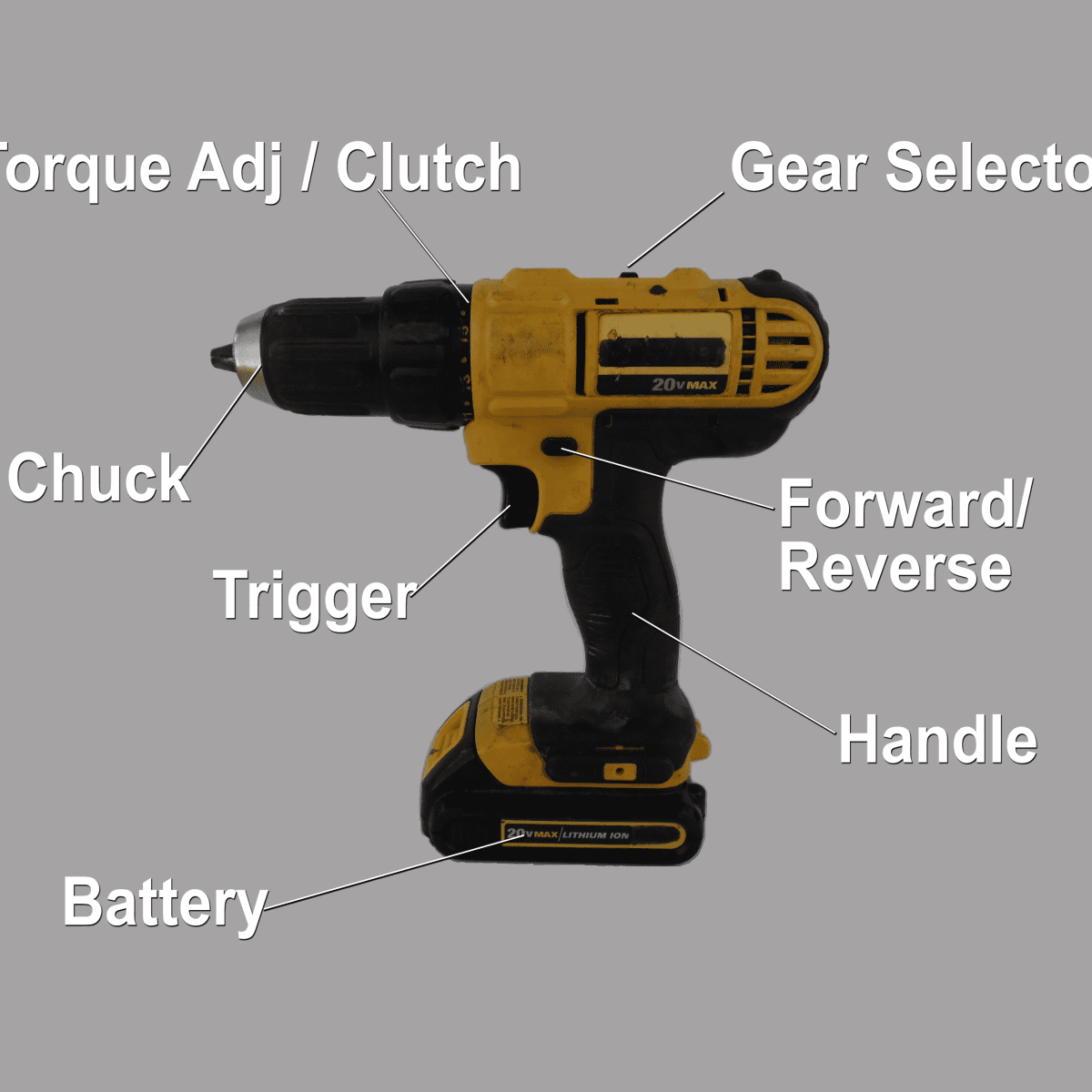Using a cordless drill is easier than you might think. These handy tools are perfect for both home projects and professional work.
Imagine you have a new shelf to hang or a piece of furniture to assemble. A cordless drill can make these tasks quick and simple. It’s a versatile tool that every DIY enthusiast should know how to use. In this guide, we’ll show you the basics of using a cordless drill.
You’ll learn about the different parts, how to change bits, and the right way to drill holes. By the end, you’ll feel confident and ready to tackle your next project. Let’s get started!

Credit: www.housebeautiful.com
Choosing The Right Drill
Choosing the right cordless drill is essential for successful DIY projects. With many options available, making the right choice can be daunting. This guide will simplify the process for you. Understanding the types of drills and key features is crucial.
Types Of Cordless Drills
There are several types of cordless drills to consider. Each type serves a specific purpose and offers unique features:
- Drill Driver: Ideal for basic drilling and screw-driving tasks. It is lightweight and easy to handle.
- Impact Driver: Best for driving screws and bolts. It delivers more torque compared to a drill driver.
- Hammer Drill: Suitable for drilling into hard materials like concrete and brick. It combines the features of a drill driver with a hammering action.
- Rotary Hammer: Heavy-duty tool for drilling into very hard materials. It offers more power and durability.
Key Features To Look For
When selecting a cordless drill, consider the following key features:
| Feature | Description |
|---|---|
| Battery Life | A longer battery life allows for extended use without frequent recharging. |
| Torque | Higher torque provides more power for tougher jobs. |
| Speed Settings | Multiple speed settings offer versatility for different tasks. |
| Weight | A lightweight drill is easier to handle for prolonged periods. |
| Ergonomics | Comfortable grip and design reduce strain on hands and wrists. |
Choosing the right drill involves understanding your needs and matching them with the right type and features.

Credit: www.blackanddecker.com
Understanding Drill Components
Learn how to use a cordless drill by understanding its main components. Familiarize yourself with the chuck, trigger, and battery. This knowledge helps in efficient and safe operation.
Knowing the parts of your cordless drill is essential. It helps you use the tool effectively. Let’s break down the key components. This will help you get the most out of your cordless drill.
Parts Of A Cordless Drill
A cordless drill has several main parts. The chuck holds the drill bit. It opens and closes with a twist. The motor powers the drill. It is usually located in the body. The trigger controls the speed. Squeeze it gently for a slow speed. Squeeze harder for a faster speed. The grip is the handle. It should be comfortable to hold. The forward/reverse switch changes the drill’s direction. Use it to drive screws in and out.
Battery And Charger Basics
The battery powers your cordless drill. It fits into the base of the drill. Different drills use different batteries. Some are removable. Others are built-in. Always check the battery type before buying. The charger is used to recharge the battery.
It plugs into a standard outlet. Make sure to follow the charging instructions. Overcharging can damage the battery. Keep a spare battery for longer projects. This way, you can keep working without interruption.
Safety Precautions
Using a cordless drill can be very helpful for various tasks at home or work. But safety should always be the top priority. Follow these safety precautions to ensure a safe and successful drilling experience.
Protective Gear
Always wear safety glasses to protect your eyes from flying debris. Use ear protection if the drill is loud. Consider wearing gloves to protect your hands. Ensure your clothing is snug. Loose clothing can get caught in the drill.
Safe Handling Practices
Hold the drill with both hands for better control. Keep a firm grip to prevent slipping. Always point the drill bit away from your body. Make sure the drill bit is secure before use. Check that the battery is fully charged. A weak battery can cause the drill to stop suddenly.
Use the correct drill bit for the material you are working on. Do not force the drill. Let the drill do the work. Keep the work area clean and well-lit. This helps to see what you are doing and avoid accidents.
Preparing Your Workspace
Before starting with your cordless drill, it’s essential to prepare your workspace. A well-organized and properly lit area helps you work efficiently and safely. Let’s dive into the critical steps for setting up your workspace.
Organizing Tools And Materials
First, gather all your tools and materials. Place them within easy reach. This saves time and reduces frustration. Use a toolbox or a pegboard to keep everything organized.
- Drill bits
- Screws
- Measuring tape
- Pencil
Arrange these items neatly on your workbench or tool organizer. Ensure each item has its place. Label the sections if necessary. Clear any clutter to avoid accidents.
Ensuring Proper Lighting
Good lighting is crucial for precision. It reduces eye strain and helps you see details clearly. Ensure your workspace is well-lit.
- Use overhead lights
- Consider a desk lamp with adjustable brightness
- Natural light works best during the day
If your workspace lacks natural light, invest in quality artificial lighting. Position the lights to minimize shadows.
Drill Bit Selection
Selecting the right drill bit is crucial for any successful drilling task. The right bit ensures clean, precise holes and prevents damage to your materials. Understanding different types of drill bits and how to choose the correct one is essential. Let’s explore the key aspects of drill bit selection.
Types Of Drill Bits
There are various drill bits designed for specific materials and purposes. Twist bits are the most common and versatile. They work well for wood, metal, and plastic. Spade bits are ideal for drilling large holes in wood. For masonry, use masonry bits.
They have a carbide tip for cutting through stone, brick, or concrete. Brad-point bits provide clean, accurate holes in wood. They have a center point for precise positioning. Hole saws create large diameter holes in wood, metal, and plastic. They consist of a circular saw blade with a pilot bit in the center. Each bit type offers unique benefits for particular tasks.
Choosing The Right Bit For The Job
Choosing the right bit depends on the material you are drilling. For wood, use twist bits, spade bits, or brad-point bits. Twist bits are versatile and work for various wood types. Spade bits are best for larger holes. Brad-point bits provide clean, precise holes in soft and hardwood.
For metal, use high-speed steel (HSS) twist bits. They are durable and can handle the hardness of metal. Use cobalt bits for drilling stainless steel. They are even more durable and heat-resistant. For masonry, use masonry bits with carbide tips. They can cut through tough materials like brick, stone, and concrete. Always match the bit to the material for the best results.
Basic Drilling Techniques
Using a cordless drill can be simple with the right techniques. Learning basic drilling methods will improve your projects. Let’s explore how to start a hole and maintain control while drilling.
Starting A Hole
Begin by marking the spot where you want to drill. Use a pencil or marker for precision. Place the drill bit on the mark. Hold the drill steady and perpendicular to the surface. Apply light pressure to start the hole. Increase the pressure gradually. This helps prevent the bit from slipping.
Maintaining Control
Hold the drill with both hands for better control. Keep your grip firm but relaxed. Maintain a steady speed. Apply even pressure throughout the drilling process. Avoid pushing too hard as it can damage the material. If drilling through metal, use a lubricant to reduce friction. This keeps the bit cool and extends its life.
Common Mistakes To Avoid
Avoiding common mistakes with a cordless drill enhances safety and efficiency. Ensure the drill bit matches the task. Always secure the material before drilling.
Using a cordless drill can make many tasks easier. But some common mistakes can affect your results. Knowing these mistakes helps you get the best performance from your drill.
Overdrilling
Overdrilling happens when you drill deeper than needed. This can cause damage to your material or weaken it. To avoid overdrilling, mark the desired depth on your drill bit with tape. This simple trick gives you a visual cue to stop drilling. Always check the drill’s speed settings. High speeds can make overdrilling more likely.
Using The Wrong Bit
Using the wrong bit can lead to poor results. Each bit is designed for a specific material. Wood bits for wood. Masonry bits for concrete. Using the wrong bit can damage both the bit and the material. Check the bit type and size before starting. Make sure it matches your material and task. This ensures a clean and precise hole every time.
Maintenance And Care
Proper maintenance and care extend the life of your cordless drill. Keeping your drill in good condition ensures it performs well every time. Let’s explore some key aspects of maintaining your drill.
Cleaning Your Drill
Regular cleaning keeps your drill working efficiently. Follow these steps to clean your drill:
- Unplug or remove the battery before cleaning.
- Use a soft cloth to wipe the exterior.
- Use compressed air to remove dust from vents and crevices.
- Check the chuck and remove any debris.
Always avoid using water or harsh chemicals. These can damage your drill. A clean drill is a happy drill. It works better and lasts longer.
Storing The Battery
Proper battery storage is vital for longevity. Here are some tips for storing your drill’s battery:
- Store the battery in a cool, dry place.
- Avoid direct sunlight and extreme temperatures.
- Keep the battery away from metal objects.
Charge the battery before storing if not been used for a long time. This helps maintain its capacity. Always follow the manufacturer’s guidelines for battery care. A well-maintained battery ensures your drill is ready when you need it.

Credit: discover.hubpages.com
Frequently Asked Questions
How Do You Use A Cordless Drill?
To use a cordless drill, insert the battery, select the drill bit, and adjust the torque settings. Hold the drill firmly, place the bit on the mark, and press the trigger.
What Are The Benefits Of A Cordless Drill?
A cordless drill offers portability, convenience, and versatility. It is easy to handle, lightweight, and can be used anywhere without the need for a power outlet.
How Do You Charge A Cordless Drill?
To charge a cordless drill, remove the battery, place it in the charger, and plug it in. Wait for the indicator light to show a full charge.
What Safety Tips Should I Follow?
Always wear safety goggles, keep your hands away from the drill bit, and ensure the drill is off when changing bits. Secure your workpiece properly.
Conclusion
Using a cordless drill is simple with practice. Remember safety first. Secure your workpiece. Choose the right drill bit. Adjust torque settings. Start slow and increase speed. Use steady pressure. Recharge batteries after use. Clean and store your drill properly.
With these steps, you can handle basic drilling tasks easily. Enjoy your DIY projects with confidence.

